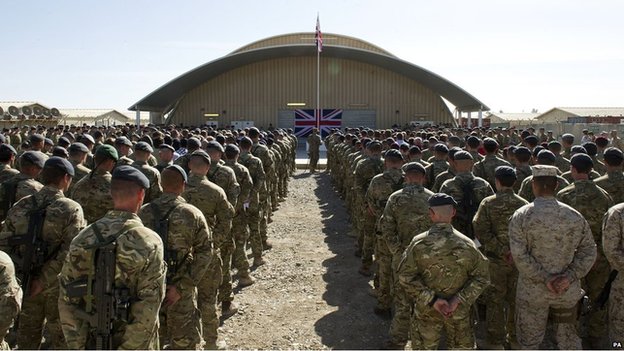Queen Elizabeth led the commemoration ceremony at the Cenotaph in London on Remembrance Day. The crowd observed two minutes two minutes of silence before the Queen laid a wreath to honor those who died while in the service. Prince Charles, the Duke of Edinburgh and Prince William also laid wreaths.
This year, Remembrance Day was special for a number of reasons, pointed out Prime Minister David Cameron. It was 100 years ago that World War I started, and is also the 70th anniversary of D-Day.
Remembrance Day celebrations and events took place in the UK and around the world. Prince Harry celebrated in Kandahar, Afghanistan where he laid a wreath with local troops. This is the year that 13 years fighting in Afghanistan by the British ended.
An outdoor celebration at the National Memorial Arboretum in Staffordshire was attended by 2000 people.
Wreaths were laid by Scottish Secretary, Alistair Carmichael and First Minister Alex Salmond in Edinburgh at St Giles Cathedral.
At the Cenotaph at the city hall in Belfast, Northern Ireland, a wreath was laid by Theresa Villiers, the Northern Ireland Secretary of State.
A national service took place in Cardiff, Wales at the Welsh National War Memorial.
Commonwealth countries held events celebrating the remembrance of fallen soldiers in Israel, Sri Lanka, Malta, and India.
At the Tower of London, thousands gathered to remember, including British soldiers who had been active in Afghanistan and Iraq. Nearly 900,000 ceramic poppies were planted at the site as a memorial. It was the first time that Bradley White, a soldier from Essex who served in both of these countries, celebrated Remembrance Day in London. When White served in Afghanistan, 9 soldiers from his regiment, the 1st Battalion, Royal Anglian, were killed.
After the prime minister, the deputy Prime Minister, Nick Clegg, and the Labour Leader, Ed Miliband paid their respects, a total of 46 high commissioners from different countries laid wreaths. The Irish ambassador to the UK then laid flowers. An Irish representative had not taken part in Remembrance Day celebrations in London since 1946. About 50,000 Irish troops died during WWI.
Other groups who laid wreaths included representatives of a number of different UK faiths, civilians, and members of the armed forces.
The crowd applauded after the Queen laid her wreath and left the Cenotaph. They bowed their heads at the sound of Big Ben striking 11am and observed 2 minutes of silence. The gathered crowd ranged from families in casual dress to veterans proudly wearing their medals. Most of the people in the group wore a poppy, and all of them remembered those who had died for our freedom.
The level of security during London celebrations were higher this year than usual, according to Scotland Yard and the head of defense staff, General Sir Nicholas Houghton. This was due to to arrest of four men earlier in the week. The men were suspected of being involved in a Islamic terrorism plan that was to take place in Britain. Houghton notes that the way the British live day by day will not be stopped by this threat.
In London, after the sun sets, pictures of falling poppies are projected on the parliament’s Elizabeth Tower, Big Ben.
The day before Remembrance Day, members of the Royal Family, including the Queen, along with veteran and members of the public, attended the annual Festival of Remembrance held by the Royal British Legion at the Royal Albert Hall, the BBC News reports.
The National Secular Society has petitioned the government to re-consider the Church of England’s role in the annual remembrance ceremony. It’s reasoning is that everyone should be included in the event regardless of their beliefs or religion, and that it should not be headed by a specific denomination of Christian faith.
